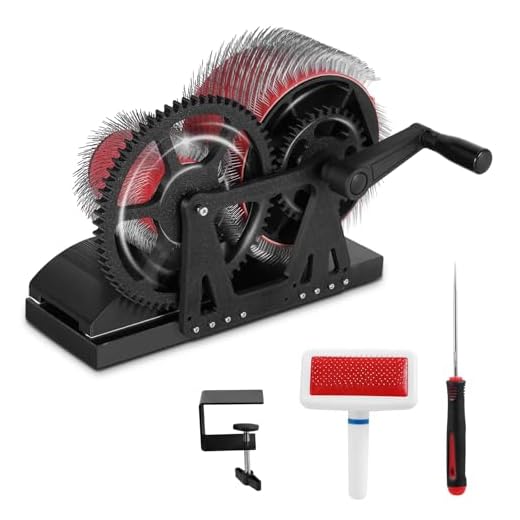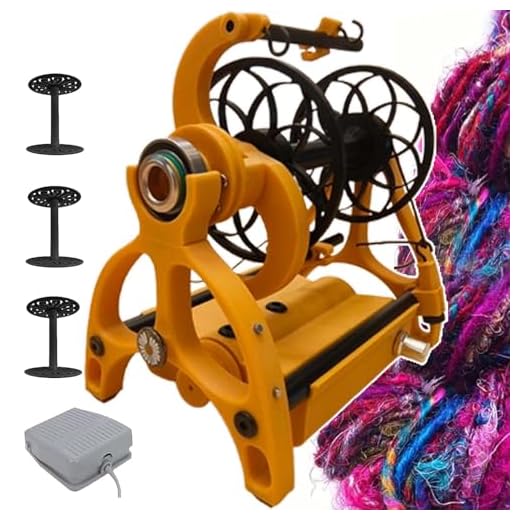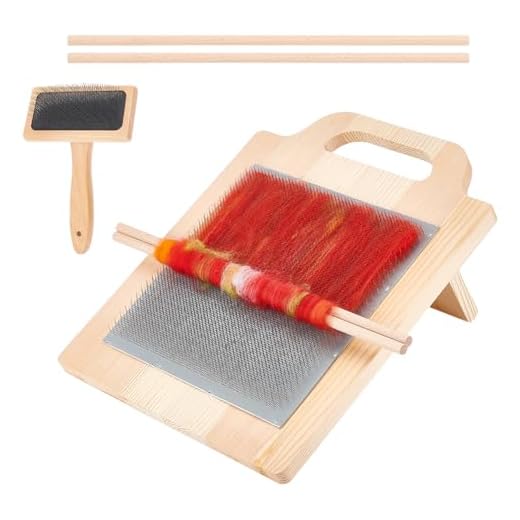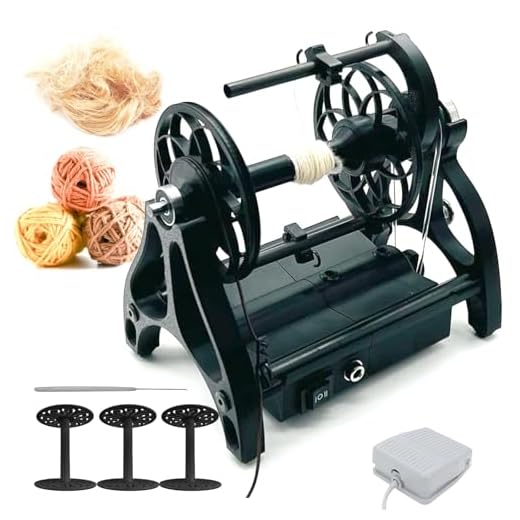
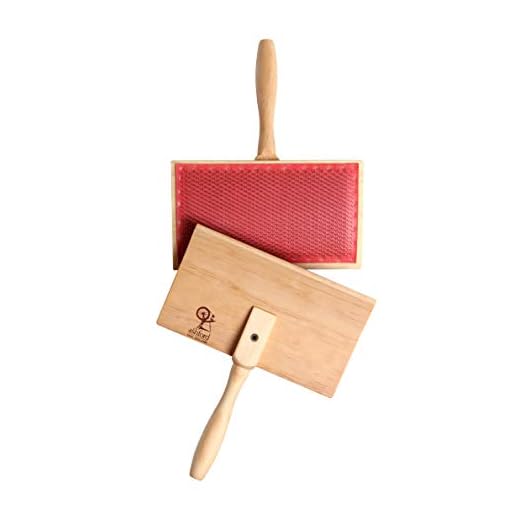
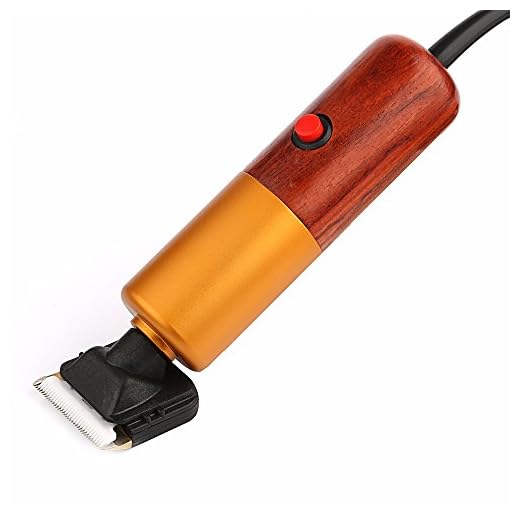

Turning my luxurious coat into a soft fiber for crafting is totally possible! With a bit of patience and the right techniques, my fluffy fur can be spun into a delightful material for all sorts of projects.
First, gather the necessary tools: a pair of scissors, a fine-toothed comb, and a spinning wheel or spindle. Gently collect loose strands from my fur, ensuring they are clean and free from debris. A careful grooming session can help maximize the amount of usable fiber.
Next, prepare the collected fluff by carding it. This process aligns the fibers and helps to remove any tangles. Once carded, the material is ready to be spun. Whether using a wheel or a spindle, practice is key to achieving a consistent thickness.
Finally, after spinning, the fiber can be plied together to create a sturdy thread. The result is a unique product that carries a personal touch–perfect for making cozy accessories or gifts that celebrate our special bond!
Crafting Fiber from Feline Fur
Transforming my fluffy coat into a usable fiber is totally achievable! It’s not just a dream; it’s a fun project. The first step involves collecting a good amount of my shed fur. Regular brushing helps gather it without making a mess.
Next, the fur needs to be cleaned. A gentle wash using mild soap will do the trick, ensuring all dirt and oils are removed. After rinsing, it’s essential to let the fibers dry completely. This step is crucial for maintaining quality.
Once dry, the next task is to prepare the fibers for spinning. Carding is an effective method for separating and aligning the fur. Using a carding tool, gently fluff and smooth the fibers. This will make spinning easier and produce a finer result.
When the fibers are ready, it’s time for spinning. A spindle or wheel can be used, depending on personal preference. Each twist adds strength to the strands, creating a sturdy product. Practice helps attain the desired thickness and texture.
To ensure the final product is durable, consider plying the spun strands together. This adds stability and can create interesting textures. Plying involves twisting two or more strands together; it’s a fun way to add creativity to the process!
| Steps | Description |
|---|---|
| Collect Fur | Regular brushing to gather loose fibers. |
| Wash | Clean the fur with mild soap and water. |
| Dry | Completely dry the cleaned fur. |
| Card | Use a carding tool to fluff and align fibers. |
| Spin | Twist fibers using a spindle or wheel. |
| Ply | Twist strands together for added strength. |
With these steps, creating a unique product from my fur is possible and enjoyable! It’s a great way to keep my fluff from going to waste while crafting something special.
Collecting Cat Hair: Best Practices for Quality Fiber
To gather the best fiber for crafting, consistency in collection is key. Regular brushing reduces loose strands while maintaining quality. Aim for at least twice a week, especially during shedding seasons.
Tools for Effective Collection
- Fine-toothed comb: Helps capture shorter strands.
- Rubber gloves: Attracts and collects loose fibers easily.
- Lint roller: Quick way to gather and remove hair from surfaces.
Storage Techniques
- Use breathable bags: Avoid plastic to prevent moisture buildup.
- Label containers: Keep track of different collected batches.
- Store in a cool, dry place: Protect the fibers from humidity and pests.
Monitoring the cleanliness of the collected material is important. Regularly check for debris and remove any foreign particles. This ensures the highest quality when it comes time to process the fibers.
Experiment with different types of brushes to find what your human prefers. Some may work better than others, depending on the texture of the coat. Remember, the fluffier the fiber, the better it will spin.
Lastly, patience is vital. Gathering enough material may take time, but the end results will be worth the effort! Happy collecting!
Preparing Cat Hair for Spinning: Techniques and Tools
First, ensure the collected fibers are clean. Rinse them in lukewarm water with a mild detergent. Gently agitate to remove dirt without damaging the strands. Rinse thoroughly and let them dry flat on a towel.
Next, carding is essential. Use a pair of hand carders or a drum carder to separate and align the fibers. This process helps create a smooth, even preparation suitable for spinning. Aim for a light, fluffy consistency.
For spinning, consider a wheel or spindle. A spinning wheel provides more control for creating thicker threads, while a spindle is great for portability. Choose based on comfort and experience level.
Before spinning, practice drafting techniques. Pull small sections of prepared fibers apart gently, ensuring even tension. This practice will lead to more consistent results during the process.
Lastly, keep tools clean and well-maintained. Regularly remove any loose fibers from carders and wheels to prevent contamination and ensure optimal performance. Happy spinning!
Spinning Cat Hair into Yarn: Step-by-Step Guide
First, gather all the fluffy fibers. I suggest collecting from your favorite napping spots or during grooming sessions. This ensures a good amount of soft material for the next steps.
Next, clean the collected fluff. Remove any debris or dirt by gently shaking it out or using a fine comb. A clean base will yield better results.
Afterward, it’s time to card the fibers. Use a pair of hand carders or a drum carder to separate and align the fibers. This process helps achieve a smoother texture, making it easier for spinning.
Now, let’s spin! Attach the prepared fibers to your spinning wheel or spindle. Start slowly to create a thin, consistent strand. Practice makes perfect, so don’t rush through this stage.
Once you achieve the desired thickness, twist the fiber tightly to secure it. This will help maintain the integrity of the strand as it gets twisted further.
After spinning, let the freshly crafted strand rest. This allows the fibers to settle into their final form. A good resting period can enhance the yarn’s quality.
Finally, wash and set the spun fiber in warm water with a mild detergent. Rinse thoroughly and hang to dry. This process helps remove any excess oils and brings out the soft texture.
Enjoy the unique outcome! Using these steps, I’ve turned my fluff into something special, perfect for cozy projects or gifts for my human friends.
Caring for Cat Hair Yarn: Maintenance and Usage Tips
Regularly wash your fiber creations by hand in cool water with a gentle detergent. Avoid agitation to prevent felting. Rinse thoroughly and lay flat to dry on a towel, reshaping as needed.
Storage Recommendations
Store finished items in a cool, dry place away from direct sunlight to maintain color and texture. Use breathable containers to prevent moisture buildup, which can lead to mildew.
Usage Suggestions
When using this unique material for projects, opt for gentle patterns that showcase its softness. Avoid heavy wear and tear to preserve its integrity. If accidents occur, like spills or stains, refer to resources like how to clean carpet with cat urine for effective cleaning tips.
FAQ:
Can you really make yarn from cat hair?
Yes, it is possible to make yarn from cat hair. This process involves collecting the hair, cleaning it, and then spinning it into yarn. Many people have successfully created yarn from their cats’ fur, and it can be a unique way to keep a memory of their pet.
What materials do I need to make yarn from cat hair?
To make yarn from cat hair, you will need a few basic materials: clean cat hair, a spinning wheel or a spindle, and possibly some tools for carding the hair. Carding helps to align the fibers, making them easier to spin. You may also want some dyes if you wish to add color to your yarn.
Is cat hair yarn durable and suitable for knitting?
Cat hair yarn can be durable, but its strength largely depends on how well it is processed. Properly spun and plied cat hair can be used for various projects, although it may not be as strong as traditional yarns like wool or cotton. It’s best used for lightweight items like scarves or accessories rather than heavy garments.
How do I clean and prepare cat hair for spinning?
To prepare cat hair for spinning, start by collecting clean, shed hair. Remove any dirt or debris by gently shaking it out or using a fine-toothed comb. Next, you can wash the hair in lukewarm water with a mild detergent. Rinse thoroughly and let it dry completely before carding and spinning. This preparation is crucial for producing quality yarn.
Are there any specific techniques for spinning cat hair into yarn?
Spinning cat hair requires some specific techniques due to the nature of the fibers. It’s advisable to card the hair first to separate and align the fibers. When spinning, use a gentle tension to avoid breaking the delicate strands. Some spinners prefer to blend cat hair with other fibers, like wool, to improve the texture and stability of the yarn.
Turning my luxurious coat into a soft fiber for crafting is totally possible! With a bit of patience and the right techniques, my fluffy fur can be spun into a delightful material for all sorts of projects.
First, gather the necessary tools: a pair of scissors, a fine-toothed comb, and a spinning wheel or spindle. Gently collect loose strands from my fur, ensuring they are clean and free from debris. A careful grooming session can help maximize the amount of usable fiber.
Next, prepare the collected fluff by carding it. This process aligns the fibers and helps to remove any tangles. Once carded, the material is ready to be spun. Whether using a wheel or a spindle, practice is key to achieving a consistent thickness.
Finally, after spinning, the fiber can be plied together to create a sturdy thread. The result is a unique product that carries a personal touch–perfect for making cozy accessories or gifts that celebrate our special bond!
Crafting Fiber from Feline Fur
Transforming my fluffy coat into a usable fiber is totally achievable! It’s not just a dream; it’s a fun project. The first step involves collecting a good amount of my shed fur. Regular brushing helps gather it without making a mess.
Next, the fur needs to be cleaned. A gentle wash using mild soap will do the trick, ensuring all dirt and oils are removed. After rinsing, it’s essential to let the fibers dry completely. This step is crucial for maintaining quality.
Once dry, the next task is to prepare the fibers for spinning. Carding is an effective method for separating and aligning the fur. Using a carding tool, gently fluff and smooth the fibers. This will make spinning easier and produce a finer result.
When the fibers are ready, it’s time for spinning. A spindle or wheel can be used, depending on personal preference. Each twist adds strength to the strands, creating a sturdy product. Practice helps attain the desired thickness and texture.
To ensure the final product is durable, consider plying the spun strands together. This adds stability and can create interesting textures. Plying involves twisting two or more strands together; it’s a fun way to add creativity to the process!
| Steps | Description |
|---|---|
| Collect Fur | Regular brushing to gather loose fibers. |
| Wash | Clean the fur with mild soap and water. |
| Dry | Completely dry the cleaned fur. |
| Card | Use a carding tool to fluff and align fibers. |
| Spin | Twist fibers using a spindle or wheel. |
| Ply | Twist strands together for added strength. |
With these steps, creating a unique product from my fur is possible and enjoyable! It’s a great way to keep my fluff from going to waste while crafting something special.
Collecting Cat Hair: Best Practices for Quality Fiber
To gather the best fiber for crafting, consistency in collection is key. Regular brushing reduces loose strands while maintaining quality. Aim for at least twice a week, especially during shedding seasons.
Tools for Effective Collection
- Fine-toothed comb: Helps capture shorter strands.
- Rubber gloves: Attracts and collects loose fibers easily.
- Lint roller: Quick way to gather and remove hair from surfaces.
Storage Techniques
- Use breathable bags: Avoid plastic to prevent moisture buildup.
- Label containers: Keep track of different collected batches.
- Store in a cool, dry place: Protect the fibers from humidity and pests.
Monitoring the cleanliness of the collected material is important. Regularly check for debris and remove any foreign particles. This ensures the highest quality when it comes time to process the fibers.
Experiment with different types of brushes to find what your human prefers. Some may work better than others, depending on the texture of the coat. Remember, the fluffier the fiber, the better it will spin.
Lastly, patience is vital. Gathering enough material may take time, but the end results will be worth the effort! Happy collecting!
Preparing Cat Hair for Spinning: Techniques and Tools
First, ensure the collected fibers are clean. Rinse them in lukewarm water with a mild detergent. Gently agitate to remove dirt without damaging the strands. Rinse thoroughly and let them dry flat on a towel.
Next, carding is essential. Use a pair of hand carders or a drum carder to separate and align the fibers. This process helps create a smooth, even preparation suitable for spinning. Aim for a light, fluffy consistency.
For spinning, consider a wheel or spindle. A spinning wheel provides more control for creating thicker threads, while a spindle is great for portability. Choose based on comfort and experience level.
Before spinning, practice drafting techniques. Pull small sections of prepared fibers apart gently, ensuring even tension. This practice will lead to more consistent results during the process.
Lastly, keep tools clean and well-maintained. Regularly remove any loose fibers from carders and wheels to prevent contamination and ensure optimal performance. Happy spinning!
Spinning Cat Hair into Yarn: Step-by-Step Guide
First, gather all the fluffy fibers. I suggest collecting from your favorite napping spots or during grooming sessions. This ensures a good amount of soft material for the next steps.
Next, clean the collected fluff. Remove any debris or dirt by gently shaking it out or using a fine comb. A clean base will yield better results.
Afterward, it’s time to card the fibers. Use a pair of hand carders or a drum carder to separate and align the fibers. This process helps achieve a smoother texture, making it easier for spinning.
Now, let’s spin! Attach the prepared fibers to your spinning wheel or spindle. Start slowly to create a thin, consistent strand. Practice makes perfect, so don’t rush through this stage.
Once you achieve the desired thickness, twist the fiber tightly to secure it. This will help maintain the integrity of the strand as it gets twisted further.
After spinning, let the freshly crafted strand rest. This allows the fibers to settle into their final form. A good resting period can enhance the yarn’s quality.
Finally, wash and set the spun fiber in warm water with a mild detergent. Rinse thoroughly and hang to dry. This process helps remove any excess oils and brings out the soft texture.
Enjoy the unique outcome! Using these steps, I’ve turned my fluff into something special, perfect for cozy projects or gifts for my human friends.
Caring for Cat Hair Yarn: Maintenance and Usage Tips
Regularly wash your fiber creations by hand in cool water with a gentle detergent. Avoid agitation to prevent felting. Rinse thoroughly and lay flat to dry on a towel, reshaping as needed.
Storage Recommendations
Store finished items in a cool, dry place away from direct sunlight to maintain color and texture. Use breathable containers to prevent moisture buildup, which can lead to mildew.
Usage Suggestions
When using this unique material for projects, opt for gentle patterns that showcase its softness. Avoid heavy wear and tear to preserve its integrity. If accidents occur, like spills or stains, refer to resources like how to clean carpet with cat urine for effective cleaning tips.
FAQ:
Can you really make yarn from cat hair?
Yes, it is possible to make yarn from cat hair. This process involves collecting the hair, cleaning it, and then spinning it into yarn. Many people have successfully created yarn from their cats’ fur, and it can be a unique way to keep a memory of their pet.
What materials do I need to make yarn from cat hair?
To make yarn from cat hair, you will need a few basic materials: clean cat hair, a spinning wheel or a spindle, and possibly some tools for carding the hair. Carding helps to align the fibers, making them easier to spin. You may also want some dyes if you wish to add color to your yarn.
Is cat hair yarn durable and suitable for knitting?
Cat hair yarn can be durable, but its strength largely depends on how well it is processed. Properly spun and plied cat hair can be used for various projects, although it may not be as strong as traditional yarns like wool or cotton. It’s best used for lightweight items like scarves or accessories rather than heavy garments.
How do I clean and prepare cat hair for spinning?
To prepare cat hair for spinning, start by collecting clean, shed hair. Remove any dirt or debris by gently shaking it out or using a fine-toothed comb. Next, you can wash the hair in lukewarm water with a mild detergent. Rinse thoroughly and let it dry completely before carding and spinning. This preparation is crucial for producing quality yarn.
Are there any specific techniques for spinning cat hair into yarn?
Spinning cat hair requires some specific techniques due to the nature of the fibers. It’s advisable to card the hair first to separate and align the fibers. When spinning, use a gentle tension to avoid breaking the delicate strands. Some spinners prefer to blend cat hair with other fibers, like wool, to improve the texture and stability of the yarn.
Turning my luxurious coat into a soft fiber for crafting is totally possible! With a bit of patience and the right techniques, my fluffy fur can be spun into a delightful material for all sorts of projects.
First, gather the necessary tools: a pair of scissors, a fine-toothed comb, and a spinning wheel or spindle. Gently collect loose strands from my fur, ensuring they are clean and free from debris. A careful grooming session can help maximize the amount of usable fiber.
Next, prepare the collected fluff by carding it. This process aligns the fibers and helps to remove any tangles. Once carded, the material is ready to be spun. Whether using a wheel or a spindle, practice is key to achieving a consistent thickness.
Finally, after spinning, the fiber can be plied together to create a sturdy thread. The result is a unique product that carries a personal touch–perfect for making cozy accessories or gifts that celebrate our special bond!
Crafting Fiber from Feline Fur
Transforming my fluffy coat into a usable fiber is totally achievable! It’s not just a dream; it’s a fun project. The first step involves collecting a good amount of my shed fur. Regular brushing helps gather it without making a mess.
Next, the fur needs to be cleaned. A gentle wash using mild soap will do the trick, ensuring all dirt and oils are removed. After rinsing, it’s essential to let the fibers dry completely. This step is crucial for maintaining quality.
Once dry, the next task is to prepare the fibers for spinning. Carding is an effective method for separating and aligning the fur. Using a carding tool, gently fluff and smooth the fibers. This will make spinning easier and produce a finer result.
When the fibers are ready, it’s time for spinning. A spindle or wheel can be used, depending on personal preference. Each twist adds strength to the strands, creating a sturdy product. Practice helps attain the desired thickness and texture.
To ensure the final product is durable, consider plying the spun strands together. This adds stability and can create interesting textures. Plying involves twisting two or more strands together; it’s a fun way to add creativity to the process!
| Steps | Description |
|---|---|
| Collect Fur | Regular brushing to gather loose fibers. |
| Wash | Clean the fur with mild soap and water. |
| Dry | Completely dry the cleaned fur. |
| Card | Use a carding tool to fluff and align fibers. |
| Spin | Twist fibers using a spindle or wheel. |
| Ply | Twist strands together for added strength. |
With these steps, creating a unique product from my fur is possible and enjoyable! It’s a great way to keep my fluff from going to waste while crafting something special.
Collecting Cat Hair: Best Practices for Quality Fiber
To gather the best fiber for crafting, consistency in collection is key. Regular brushing reduces loose strands while maintaining quality. Aim for at least twice a week, especially during shedding seasons.
Tools for Effective Collection
- Fine-toothed comb: Helps capture shorter strands.
- Rubber gloves: Attracts and collects loose fibers easily.
- Lint roller: Quick way to gather and remove hair from surfaces.
Storage Techniques
- Use breathable bags: Avoid plastic to prevent moisture buildup.
- Label containers: Keep track of different collected batches.
- Store in a cool, dry place: Protect the fibers from humidity and pests.
Monitoring the cleanliness of the collected material is important. Regularly check for debris and remove any foreign particles. This ensures the highest quality when it comes time to process the fibers.
Experiment with different types of brushes to find what your human prefers. Some may work better than others, depending on the texture of the coat. Remember, the fluffier the fiber, the better it will spin.
Lastly, patience is vital. Gathering enough material may take time, but the end results will be worth the effort! Happy collecting!
Preparing Cat Hair for Spinning: Techniques and Tools
First, ensure the collected fibers are clean. Rinse them in lukewarm water with a mild detergent. Gently agitate to remove dirt without damaging the strands. Rinse thoroughly and let them dry flat on a towel.
Next, carding is essential. Use a pair of hand carders or a drum carder to separate and align the fibers. This process helps create a smooth, even preparation suitable for spinning. Aim for a light, fluffy consistency.
For spinning, consider a wheel or spindle. A spinning wheel provides more control for creating thicker threads, while a spindle is great for portability. Choose based on comfort and experience level.
Before spinning, practice drafting techniques. Pull small sections of prepared fibers apart gently, ensuring even tension. This practice will lead to more consistent results during the process.
Lastly, keep tools clean and well-maintained. Regularly remove any loose fibers from carders and wheels to prevent contamination and ensure optimal performance. Happy spinning!
Spinning Cat Hair into Yarn: Step-by-Step Guide
First, gather all the fluffy fibers. I suggest collecting from your favorite napping spots or during grooming sessions. This ensures a good amount of soft material for the next steps.
Next, clean the collected fluff. Remove any debris or dirt by gently shaking it out or using a fine comb. A clean base will yield better results.
Afterward, it’s time to card the fibers. Use a pair of hand carders or a drum carder to separate and align the fibers. This process helps achieve a smoother texture, making it easier for spinning.
Now, let’s spin! Attach the prepared fibers to your spinning wheel or spindle. Start slowly to create a thin, consistent strand. Practice makes perfect, so don’t rush through this stage.
Once you achieve the desired thickness, twist the fiber tightly to secure it. This will help maintain the integrity of the strand as it gets twisted further.
After spinning, let the freshly crafted strand rest. This allows the fibers to settle into their final form. A good resting period can enhance the yarn’s quality.
Finally, wash and set the spun fiber in warm water with a mild detergent. Rinse thoroughly and hang to dry. This process helps remove any excess oils and brings out the soft texture.
Enjoy the unique outcome! Using these steps, I’ve turned my fluff into something special, perfect for cozy projects or gifts for my human friends.
Caring for Cat Hair Yarn: Maintenance and Usage Tips
Regularly wash your fiber creations by hand in cool water with a gentle detergent. Avoid agitation to prevent felting. Rinse thoroughly and lay flat to dry on a towel, reshaping as needed.
Storage Recommendations
Store finished items in a cool, dry place away from direct sunlight to maintain color and texture. Use breathable containers to prevent moisture buildup, which can lead to mildew.
Usage Suggestions
When using this unique material for projects, opt for gentle patterns that showcase its softness. Avoid heavy wear and tear to preserve its integrity. If accidents occur, like spills or stains, refer to resources like how to clean carpet with cat urine for effective cleaning tips.
FAQ:
Can you really make yarn from cat hair?
Yes, it is possible to make yarn from cat hair. This process involves collecting the hair, cleaning it, and then spinning it into yarn. Many people have successfully created yarn from their cats’ fur, and it can be a unique way to keep a memory of their pet.
What materials do I need to make yarn from cat hair?
To make yarn from cat hair, you will need a few basic materials: clean cat hair, a spinning wheel or a spindle, and possibly some tools for carding the hair. Carding helps to align the fibers, making them easier to spin. You may also want some dyes if you wish to add color to your yarn.
Is cat hair yarn durable and suitable for knitting?
Cat hair yarn can be durable, but its strength largely depends on how well it is processed. Properly spun and plied cat hair can be used for various projects, although it may not be as strong as traditional yarns like wool or cotton. It’s best used for lightweight items like scarves or accessories rather than heavy garments.
How do I clean and prepare cat hair for spinning?
To prepare cat hair for spinning, start by collecting clean, shed hair. Remove any dirt or debris by gently shaking it out or using a fine-toothed comb. Next, you can wash the hair in lukewarm water with a mild detergent. Rinse thoroughly and let it dry completely before carding and spinning. This preparation is crucial for producing quality yarn.
Are there any specific techniques for spinning cat hair into yarn?
Spinning cat hair requires some specific techniques due to the nature of the fibers. It’s advisable to card the hair first to separate and align the fibers. When spinning, use a gentle tension to avoid breaking the delicate strands. Some spinners prefer to blend cat hair with other fibers, like wool, to improve the texture and stability of the yarn.


